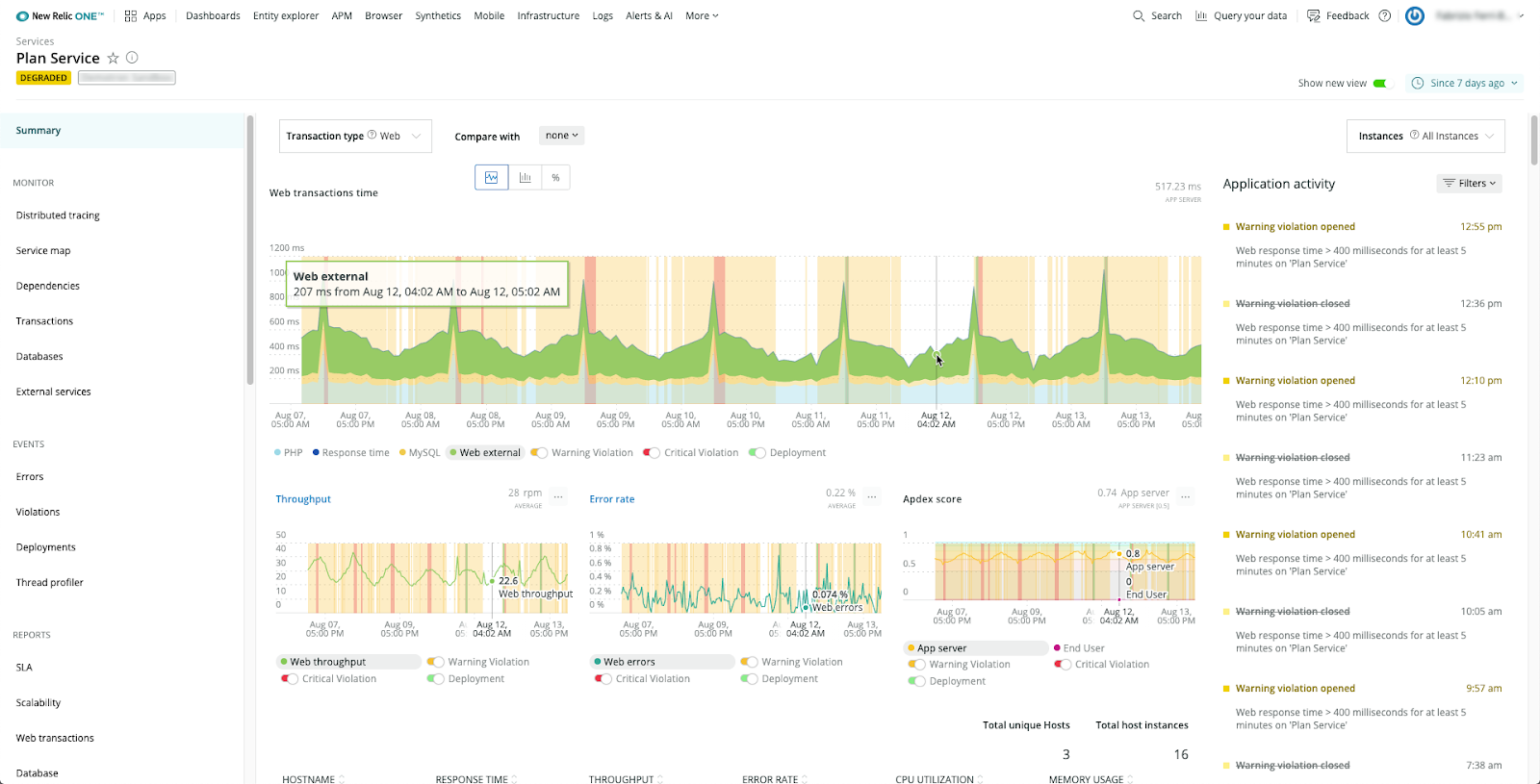Imagine that you're searching for a product and click on a Google search result. How long would you wait for the page to load? If you're like most people, you'll stick around for a couple of seconds at most. If the page doesn't load, you'll quickly click the back button and move on to the next search result – and you'll probably shy away from that brand in the future.
Let's take a closer look at why application performance is so important, how to spot problems with application performance monitoring, and how to build these tools into your day-to-day workflow.
A high level of performance is essential to the success of most web applications, making APM tools critical to spot any performance issues before they turn into bigger problems. Share on XWhy Performance Matters
Application performance is critical to the success of many web applications – especially consumer-facing apps. According to Aberdeen, every second beyond the two-second mark results in a 7% drop in conversion rates and an 11% drop in pageviews. Poor performance also leaves visitors with a bad perception of the overall brand.
While a poor user experience is the biggest concern, slow performance also negatively impacts search engine rankings. Google penalizes pages with slow loading times even if they have more relevant content. That's because many users that experience a slow website will immediately click back to the search results page – telling Google it's a bad result.
Of course, poor performance also impacts existing customers. According to Salesforce, 47% of customers say they'll stop using a software product if they encounter a bug or other quality issue. Unhappy customers may also leave negative reviews, resulting in lower long-term growth rates given that 40% of customers don't buy when there are negative reviews.
Application Performance Monitoring
Maximizing performance is simple with small applications, but today's distributed architectures create new challenges. Fortunately, application performance monitoring, or APM, software can help monitor and manage performance across the application stack. As a result, you can minimize downtime by immediately identifying any problematic issues.

New Relic’s dashboard makes it easy to spot performance problems. Source: New Relic
There are a few types of APM solutions:
- Application: Application metrics-based APM tools collect app and server-related metrics to determine what requests are slow. However, they don't profile the application's code, so they cannot automatically identify what might be causing issues.
- Code: Code profiling-based APM tools perform code profiling and tracing to identify the root cause of performance issues. Many popular APM tools use domain-specific AI and ML techniques to expedite these analyses and avoid false positives.
- Network: Network-based APM tools measure network traffic. For example, you can analyze the impact of Content Delivery Networks (CDNs) or API calls, as well as access low-level information about packet loss, latency, and network-related errors.
These solutions may have several features:
- Resource Usage: Many APM solutions monitor a server's CPU and memory usage, especially when auto-scaling applications based on traffic levels. After all, the fastest fix is to throw more server resources at a problem while diagnosing a long-term fix.
- Code Performance: Code profiling tools might look for N+1 queries or other anti-patterns that lead to poor performance. In addition, APM solutions may look for slow-running code via stack traces to identify potential areas to improve.
- Centralized Logging: Many APM solutions aggregate servers and application logs into a single area and structures them for easier analysis. In addition, they often provide visualization tools to spot anomalies and see long-term trends.
- Real User Monitoring: Some APM solutions inject a JavaScript tag into a visitor's browser to provide feedback from the user's perspective. That way, you can catch problems like poor client-side JavaScript performance that wouldn't be caught server-side.
- Dependency Monitoring: APM tools may track the performance of dependencies, including caching services, external APIs, or CDNs. Since these problems aren't present in your code, there's no way to discover them without actively watching them.
There are hundreds of different APM products out there, ranging from open source to enterprise solutions. The most popular solutions include New Relic, AppDynamics, Dynatrace, ScoutAPM, and Datadog. Ultimately, the right decision depends on your organization's budget and technical requirements, but these options are some great starting points.
Creating a Feedback Loop
Application Performance Monitoring helps you spot performance issues and even diagnose their root cause. However, these tools don't communicate the problem with the rest of your team or actually fix the problem. As a result, you'll need to create a feedback loop that sends impactful problems to the right developers for follow-up.
The good news is that it's easy to automate these processes. For example, many APM solutions integrate with continuous integration and development (CI/CD) processes to spot code-level issues. Bug trackers and communication tools may also integrate with them to streamline the promotion of performance issues into tickets or issues.
When designing a feedback loop, it's essential to keep in mind that not all performance issues may be worth fixing. For instance, issues that only impact a handful of users in edge cases may not be worth the development time to fix right away. On the other hand, issues impacting VIP users or customer SLAs may be extremely urgent.
The Bottom Line
Performance is essential to the success of web applications. In addition to turning off visitors, poor performance can cause increased customer attrition and hurt brand reputation. Fortunately, APM solutions can help spot these problems and address them before they become larger problems, making them essential to long-term success.
If you need help addressing performance issues, Sharkbyte has decades of experience in custom software development. Our team augmentation services can help you increase development capacity to resolve these issues and ensure they don't affect your business.



